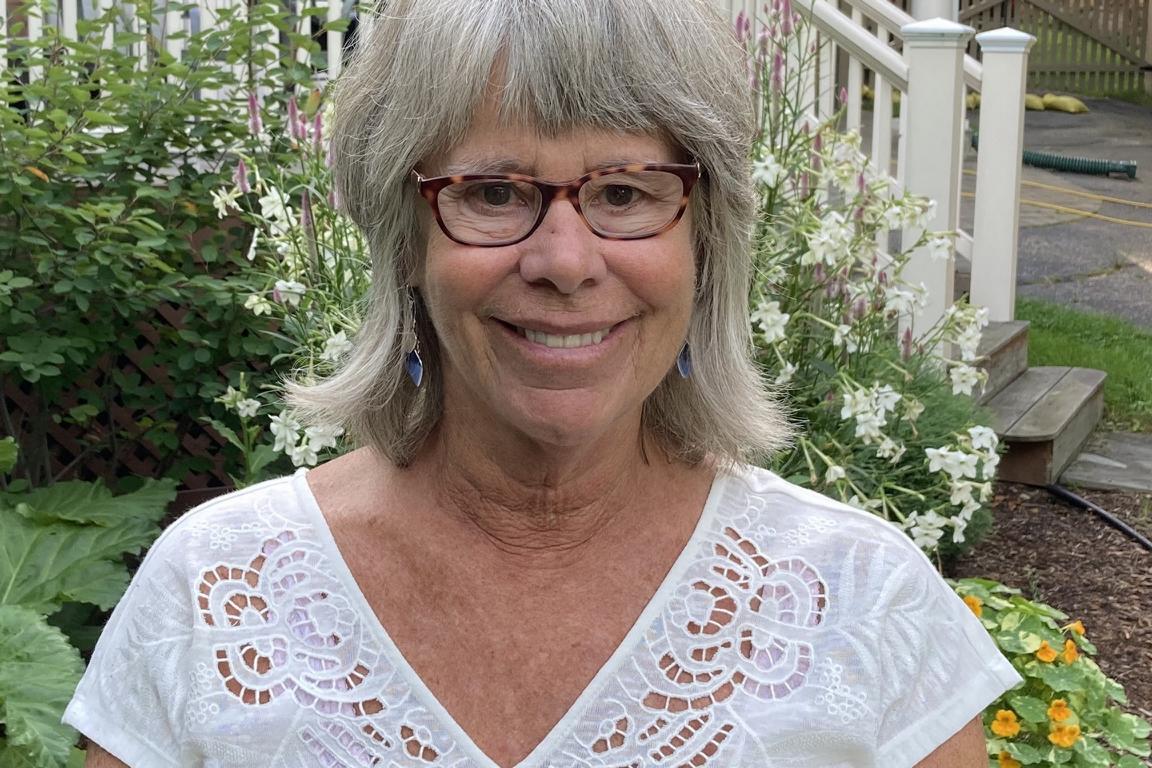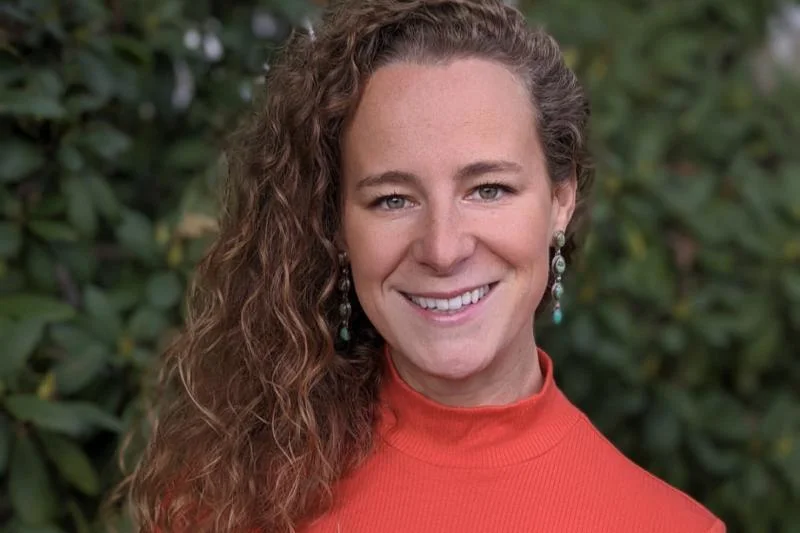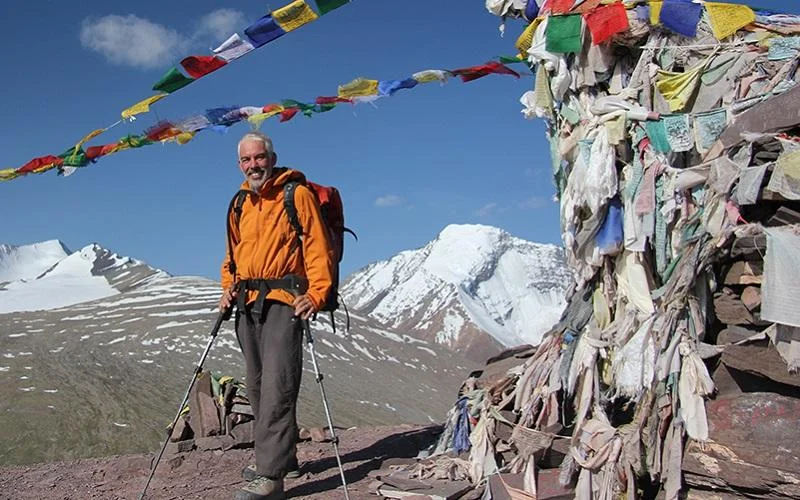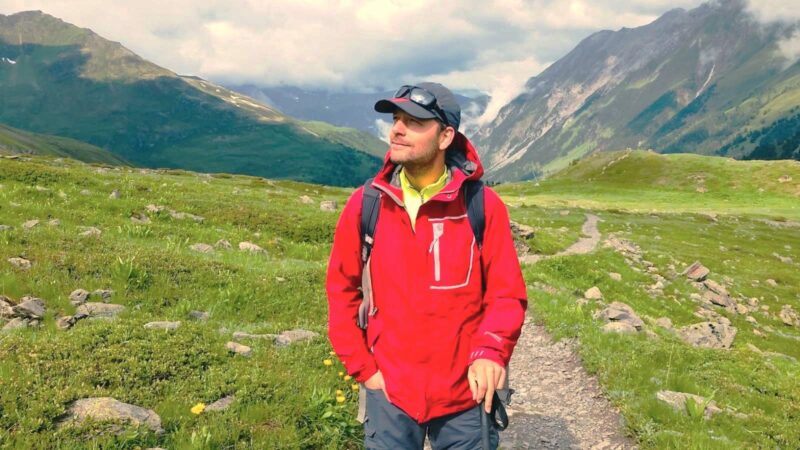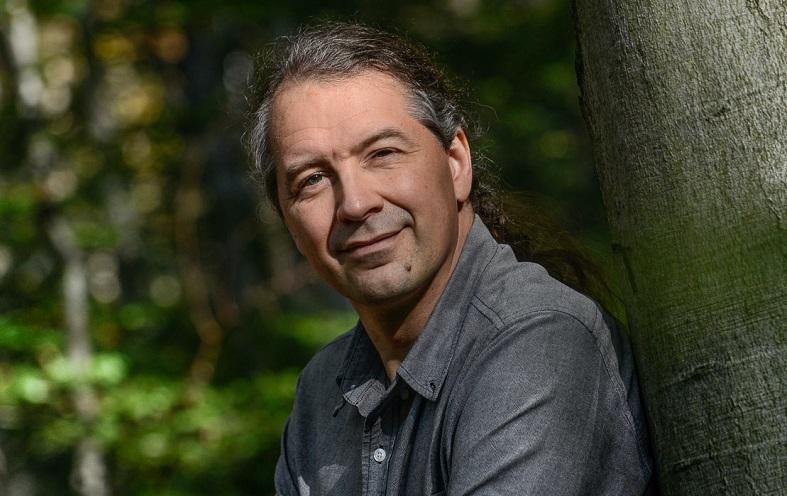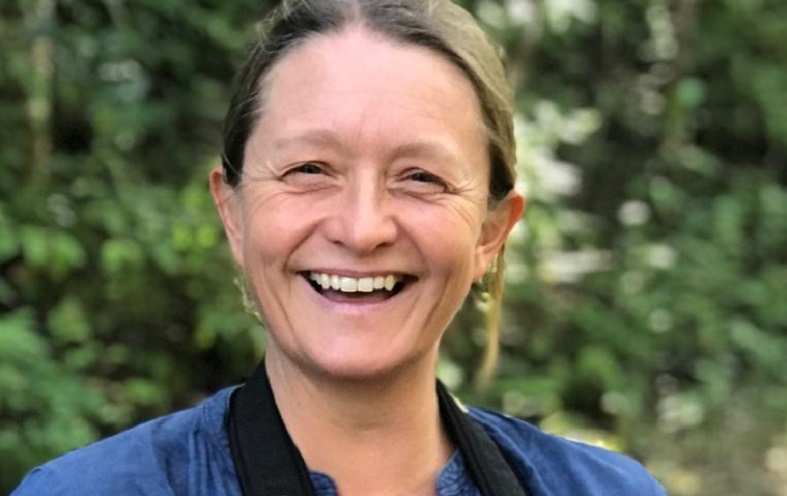
Anna Spenceley is one of those professionals whose name you hear over and over – involved in trillions of initiatives and projects (both paid and pro bono), making you wonder how one person can get so much done and have such a huge impact.
In this interview, the former academic and now leading sustainable tourism advisor shares what she does, how she does it and why there’s reason to be hopeful and optimistic in tourism, despite the many challenges business and destinations face, not least now due to the coronavirus pandemic.
Anna, do you remember what inspired you to dedicate your career towards sustainable tourism and the conservation of protected areas?
I’ve always been fascinated by nature and wildlife, and have been particularly inspired as a child by documentaries from Sir David Attenborough and the BBC that showcase the beauty and diversity of our planet. Later I had the good fortune to get a place on a Tropical Biology Association course in Uganda’s Kibale forest, and then take a backpacking tour around some of Kenya and Tanzania’s iconic protected areas – and that really sealed it. I knew then that I wanted to dedicate myself to working on using tourism as a way of generating benefits for local people while financing conservation of wildlife and protected areas.
A masters project in Zimbabwe’s Hwange National Park, a PhD in Kruger National Park and its private game reserves, and a couple of postdocs on top really cemented this. This academic grounding allowed me to move into more of a practitioner role, and I now have incredible opportunities to work with clients and colleagues on a variety of sustainable tourism initiatives across the world.
Now I feel really privileged that I have the opportunity to work on sustainable tourism issues at a local and international level. For example, in my voluntary capacity, I have the honour of being the Chair of the IUCN World Commission on Protected Areas’ (WCPA) Tourism and Protected Areas Specialist Group (TAPAS Group). I sit on the Board of the Global Sustainable Tourism Council (GSTC), and also am part of the Travalyst Independent Advisory Group.
Africa has been the focus of much of your work. Which market trends do you observe right now which might influence responsible tourism practice and the sustainability performance of destinations there?
Last year Sue Snyman and I published a book called ‘Private sector tourism in conservation areas in Africa’ which included 32 case studies of accommodation operations. Collaborating with this suite of enterprises – some of which we had worked with for many years – this publication allowed us to look at the business models, environmental, social and economic benefits generated and changes over time.
For example, we found that 26 of the lodges collectively employed over 1,600 people, of whom 77% were from local communities, and the lodges were spending USD16.3 million each year on local wages.
The trend towards employing local people, and buying goods and services from them to support tourism, coupled with supporting rural entrepreneurs and small enterprises can really bolster rural economies.
The World Travel and Tourism Council recently released a study on The Economic Impact of Global Wildlife Tourism, and highlighted that wildlife tourism contributes USD 343.6 billion (or the equivalent of the entire GDP of South Africa), and 21.8 million jobs (6.8% of all travel and tourism jobs). The impacts of this sector in Africa and worldwide are really substantial.
There is an increasing trend of protected areas seeking partnerships with private sector operators to develop and operate sustainable tourism services, such as accommodation and restaurants.
With support from the Convention on Biological Diversity, myself and co-authors Sue Snyman and Paul Eagles produced ‘Guidelines for tourism partnerships and concessions for protected areas’ to assist them. These guidelines provide guidance to support protected areas that want to forge commercial relationships with tourism investors and operators, in a way that supports their conservation objectives while benefiting local people. Their development and testing engaged professionals from 10 African countries and protected areas to ensure that they were practical and relevant.
These and a range of other issues are also covered in the IUCN Best Practice Guidelines on ‘Tourism and visitor management in protected areas’ that I co-edited with Yu-Fai Leung, Glen Hvenegaard and Ralf Buckley, and complementary guidance from the United Nations Development Program and International Finance Corporation.
Then there is also the change in the growth of a market demand for sustainable tourism. A while back Andrew Rylance and I wrote ‘The Responsible Tourist’, as a modest ebook that aimed to help travellers make informed decisions about destinations, online booking platforms, and hotels and tour operators that operate sustainably. The book was an effort to separate ‘greenwash’ from actors that were reporting valid claims of sustainable practices. It is fantastic to see how the Travalyst coalition is taking these issues – of connecting travellers to good actors – up to a whole new level.
You are part of the Travalyst advisory group – what is this new initiative about? How does it add value to the already existing organizations dedicated to facilitating a more sustainable tourism?
The Travalyst coalition is a global partnership founded by The Duke of Sussex together with leading brands Booking.com, Skyscanner, Tripadvisor, Trip.com and Visa. The overall aim is to “change the impact of travel for good,” and the first steps have been to develop sustainability frameworks to serve as a cross-channel guide for scoring sustainability practices across the travel and tourism industry.
I am a member of the independent advisory group that has been brought in to help advise, check, and scruitinse their work, and while it is only early days, I am enthusiastic for the impact the organisation can have.
I think that Travalyst will add value through its leadership in drawing together these major players who’ve agreed to collaborate on this collective interest to innovate sustainable tourism tools. The partners represent some of the most influential companies in the travel and tourism industry, and their digital platforms have collective access to the majority of the world’s travellers.
I am excited to play my part, and believe that these efforts have the potential – if done correctly – to really accelerate the mainstreaming of sustainable tourism practices globally
What criteria will tourism businesses or destinations have to meet, to be part of this new initiative?
The ambition is to ensure everyone within the travel and tourism industry can play a role, and can ultimately benefit.
Recently, a summit took place in Scotland to discuss the draft tools with tourism stakeholders, and there will be more opportunities for tourism business and engagement like this in the future. If people want to get involved at this stage, they can sign up at the Travalyst website.
Reducing poverty through conservation and tourism: which are the common challenges locals face in terms of benefiting from revenue generated through protected areas, or in their destination?
Common challenges that I’ve observed include a lack of access to markets, and information and training about how to engage in tourism, and the ‘build and they will come’ falicy.
In my earlier studies, I believed that creating community-based tourism (CBT) enterprises could solve this, but the more I read, learned, and saw, changed my perception. CBT is difficult to establish, and sometimes even more challenging to sustain over time as a commercially credible concern.
While joint-venture operations allow partnerships between communities and the private sector to counter capacity constraints of rural people in developing countries, it can take many years and technical inputs to establish the correct governance conditions to make them work.
In 2016 I co-authored ‘Operational guidelines for community-based tourism in South Africa’ with Andrew Rylance, Sadia Nanabhay and Heidi van der Watt for the International Labour Organisation. These guidelines attempted to overcome the challenges faced in CBT and joint-ventures. We suggested steps that could be taken not only to develop new ventures, but also how to improve CBTs that are not succeeding, or modify tourism enterprises that want to engage more with local communities.
One of the important things we can do is to quantify the economic effects that tourism has in local economies. In the past I’ve used value chain analysis tools, case studies, and book compilations such as ‘Tourism and poverty reduction: Impacts and principles in developing countries’ – co-edited with the late Dorothea Meyer – to examine the benefits that local people see from tourism.
Now, together with fifteen contributors drawn from the TAPAS Group, I’m co-editing ‘Visitors count!’, which will provide practical guidance for protected areas on the economic analysis of visitation. This will help destinations to understand how to assess their economic contributions and impacts, and also how to communicate the results to decision makers and the public.
Which KPI would you recommend destinations to use, to measure and monitor the success of their sustainability?
I think that the GSTC Destination Criteria (version 2.0) are a great tool for this purpose. Tourism destinations can become certified by independent bodies as sustainable – including those that use standards equivalent to the GSTC Destination Criteria such as EarthCheck and Biosphere Responsible Tourism.
I’ve also been been supporting UNESCO to develop a Visitor Management Assessment Tool (VMAT), which will provide tools for World Heritage Site managers to evaluate their sustainability, and make decisions on which areas need to be improved. This tool combines GSTC criteria and also elements relating to the Outstanding Universal Values of the sites, and will be available in the near future.
Also, I’m in the process of editing a new ‘Handbook on applied research tools for sustainable tourism’, which is due to be published by Edward Elgar in 2021. This will contain a series of ‘how to’ papers by experienced sustainable tourism practitioners, consultants and academics that will help others measure and monitor sustainability in practice. The book will cover issues relating to planning and designing sustainable tourism; enhancing the sustainability of existing tourism facilities; and also balancing overtourism and undertourism (i.e. visitor management in practice).
So, the Handbook will bring together practical advice from leading international practitioners in sustainable tourism. I am truly humbled that so many people I admire have agreed to contribute to the volume with their insights and expertise.
To your mind, what role does tourism play in response to the global climate crisis?
I think tourism has a crucial role to play in responding to the climate crisis. This is not only in looking at the transport, and how we travel, but also where we stay, what we consume and buy during those trips.
The UN Intergovernmental Panel on Climate Change (IPCC) says that we have just over a decade to restrict global warming to 1.5oC above pre-industrial levels, if we are to avoid extreme floods, droughts and heat. And the World Economic Forum suggests several ways that we can all reduce our carbon footprint through the way we travel. These include travelling light by reducing consumption while we travel; travelling with trust, but using accommodation that is certified under standards equivalent to the GSTC Industry criteria, and which use renewable energy, and by travelling slowly and carefully.
With the immensity of the challenge, partnerships addressing climate change are crucial. ‘Tourism Declares a Climate Emergency’ established by Jeremy Smith is a new collective of travel companies, organisations and professionals that recognize the urgency of climate change, and are accepting responsibility, and aim to act and collaborate to find solutions.
I recognize my own responsibility here too, and have signed up to the collective, and have published a declaration and plan that I’m implementing. I’d strongly encourage all those reading this to consider doing the same.
Another complementary initiative is the ‘Strong Universal Network’ (SUNx) founded by Geoffrey Lipman, which provides a system for tourism destinations and stakeholders to build climate resilience through climate-friendly travel.
Which aspects of working as a sustainable tourism consultant do you find the most rewarding?
Most rewarding aspects include that I’m learning all the time. I get to the opportunity to work on a complex array of challenges and collaborate with others to identify the best solutions in specific settings.
I enjoy linking people together who have good things to share, or who can benefit from collaborating with one another, including through the TAPAS Group. I like working on a range of projects – whether as paid or as a volunteer – from the level of international organisations and networks, to national governments, private business and with local communities members.
Being adaptable and flexible during assignments is critical. The diversity of projects keeps me engaged and busy, whether it is working on the design of new projects and initiatives, the evaluation of ongoing or completed programs, synthesising analyses and compiling technical tools or case studies.
And which the most difficult?
Most difficult is not having enough time to do all of the things that I want to do, or that need to be done. For example, I make my living as a consultant, but I want to balance this with the voluntary activities (e.g. the TAPAS Group, GSTC and Travalyst) and family life.
I’ve found it challenging to translate complex technical or academic terms and sector jargon into easily understandable messages – and this is an area where I am still trying to improve!
Then, sustainable tourism work often requires travel to destinations, to gather information and local stakeholder perceptions, to do field work, and to validate options. However, this is going to be more challenging in the coming months with the coronavirus COVID 19 pandemic. I’m already adapting with an increasing emphasis on desk-based support and teleconferences. While this will reduce my carbon emissions, it is a challenge to really understand a place if you haven’t been there, experienced it, and had face-to-face conversations with people that live there.
I’m also concerned about the impact it will have on tourism businesses, the livelhoods of people they support, and the natural and cultural assets that tourism financially supports. Still, we all need to adapt and be pragmatic in the face of this challenge.
Thank you, Anna.
Connect with Anna via Twitter, LinkedIn, or stay up to date on her work by visiting her website and blog.
Photo credit: Peter John Massyn
Did you like our interview with Anna Spenceley, about her work as sustainable tourism consultant and her experiences of helping destinations and tourism businesses to become more sustainable? Thanks for sharing!
cialis next day delivery usa
buy Lexapro no prescription
Zyban Without Prescription
buy Finasteride online


